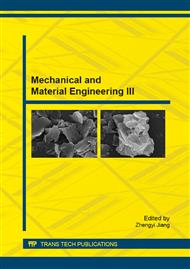p.205
p.212
p.218
p.225
p.229
p.235
p.240
p.245
p.259
Efficiency Improvement of Thermistor Sensor Production Line through Line Balancing Methods
Abstract:
The purpose of this paper is to demonstrate an efficiency improvement of assembly line by through line balancing method. By reducing lost time in assembly line caused working time each station does not equal. There was a wait time between work stations. As a result, the effectiveness and efficiency of the assembly line low. Will be affected the delivery of product to customers is not enough or back order. In addition, calculation of line balancing is demonstrated. One of the actual manual assembly lines will be through as a case study. It is found that after improvement line balance efficiency is increased from 63.62 to 89.52 percent with the efficiency improvement of 25.9 percent.
Info:
Periodical:
Pages:
240-244
Citation:
Online since:
July 2015
Authors:
Price:
Сopyright:
© 2015 Trans Tech Publications Ltd. All Rights Reserved
Share:
Citation:


